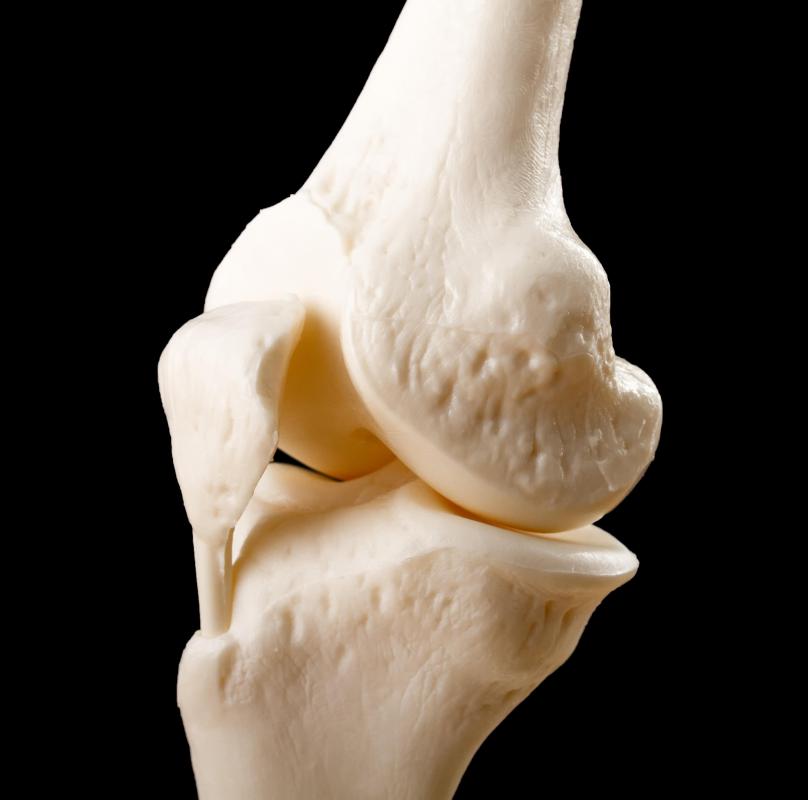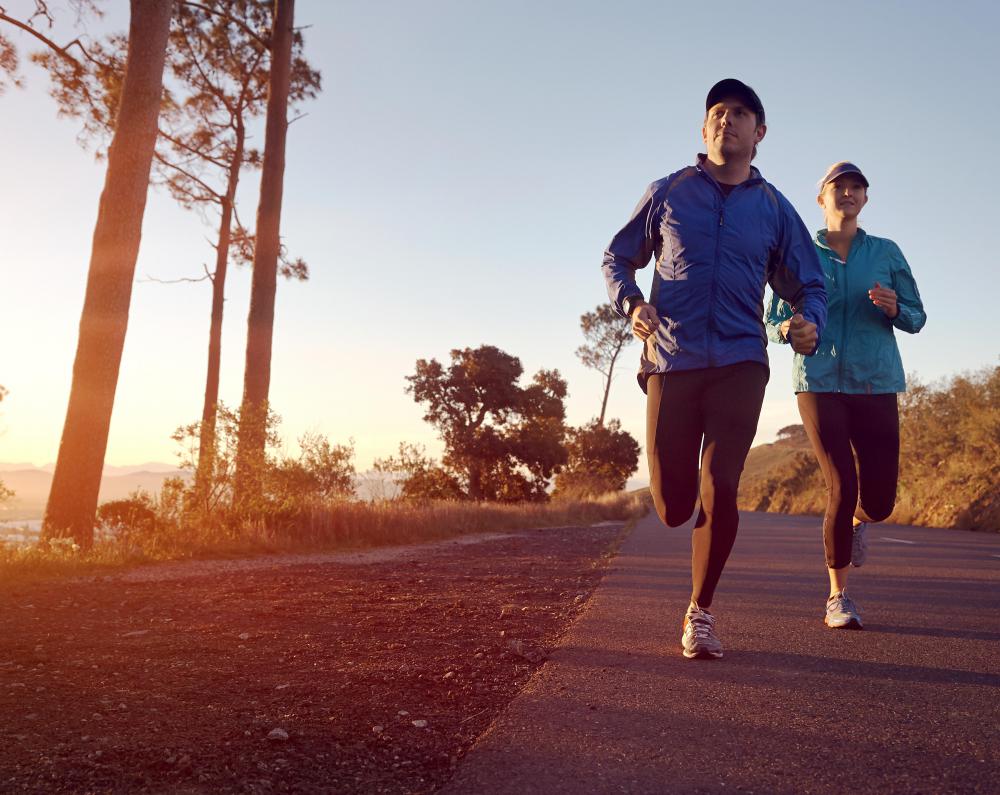At WiseGEEK, we're committed to delivering accurate, trustworthy information. Our expert-authored content is rigorously fact-checked and sourced from credible authorities. Discover how we uphold the highest standards in providing you with reliable knowledge.
What is the Quadriceps Tendon?
The quadriceps tendon is a common tendon of the four quadriceps femoris muscles in the thigh. It is found where these four muscles converge at the bottom of the front of the thigh, just above the knee, and attach to the patella, or kneecap. Though it is a tendon and not a muscle, this fibrous band plays an important role in the flexion and extension, or bending and straightening, of the knee.
A common tendon for the rectus femoris, vastus medialis, vastus intermedius, and vastus lateralis, the quadriceps tendon attaches these muscles to the patella bone. This tendon then continues over and around the kneecap to form the patellar ligament just beneath it, which is the structure that connects the patella to the tibia bone in the lower leg. As such, it is difficult to define exactly where the tendon ends, but because it crosses the knee and connects the femur bone in the thigh to the tibia, any pull exerted on the quadriceps tendon from a contraction of the quadriceps will result in extension of the knee joint.

Like all tendons, the quadriceps tendon is made up of tightly bundled collagen fibers. While it cannot achieve the change in length that its adjacent muscle groups are capable of achieving, this tendon can be thought of like a spring. Not only can it transfer forces from the quadriceps muscles across the knee joint and help stabilize the knee, but it can store elastic energy produced by motion until it is ready to be released. For example, as a person places her foot on a stair in preparation to take a step, the quadriceps and their tendon are stretched as the knee is bent. Then, as she pushes upward and straightens her leg, the quadriceps contract and stored energy in the tendon is liberated, allowing for greater generation of force in the muscles.

Because the quadriceps muscles and quadriceps tendon are so frequently activated during activity — running, jumping, climbing, and squatting all heavily depend upon the quadriceps for leg extension — they also are commonly injured, particularly if they are weak or inflexible. Typical tendon injuries include strain, partial tears, and complete tears. Strains occur when the tissue is overstretched and most often occur right where the muscles converge at the tendon. Tears most commonly affect the base of the rectus femoris muscle, the outermost of the four quadriceps muscles. Additionally, tendinitis is common at this site, the result of repetitive wearing on the tendon from frequent running, jumping, or other similar activities.
AS FEATURED ON:
AS FEATURED ON:
















Discuss this Article
Post your comments